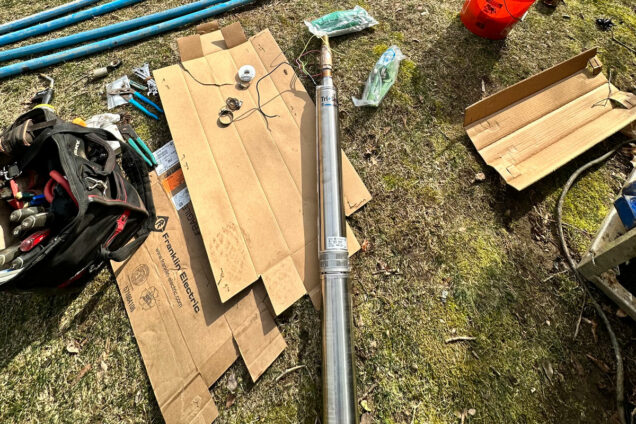Have you opened your faucets and found little or no water flowing out? Disappointing, obviously — and potentially worrisome, if you suspect some major underlying cause in your good system.
Sometimes, though, the issue is just that your well pump needs re-priming. That’s generally a pretty straightforward job. If re-priming — a process that may need to be repeated a few times to be successful — doesn’t restore full water flow, there may well be something else going on that needs to be attended to.
Whether for help with re-priming or to fix a more fundamental problem that’s making it impossible to achieve a prime, don’t hesitate to get in touch with our team here at Greco & Haines. We serve customers across the state of Connecticut with any well-system issues, and our comprehensive, always-reliable services are available every day of the week!
Priming a Well Pump
Priming simply refers to filling a well pump and intake lines with water, purging air from the system and thus creating the pressure vacuum necessary for the pump to do its job of drawing water out of the well.
Not all pumps need to be primed. A submersible well pump operates near the bottom of the well, underwater, and thus doesn’t require priming. Non-submersible self-priming water pumps usually only need to be primed upon their initial installation.
Above-water jet well pumps may lose their prime and start sucking through air rather than water for a variety of reasons. An overdrawn or dry well is certainly one possibility. Malfunctioning, damaged, or loose foot valves, check valves, fittings, and seals can also cause a pump to lose its prime. And a leak somewhere in the pipes can do the same.
It goes without saying that you want to address a pump that’s lost its prime — and not only to restore water flow. A pump cycling air may end up burning out its motor, leading to repair or replacement costs.
How to Prime a Well Pump
To prime a water well pump, you need to add water to its fill valve. First, though, you should conduct a thorough inspection of the pump and its associated lines to see if you can identify any leaks, loose connections, or other obvious issues that must be fixed before priming is possible.
Before re-priming a pump, always shut off power to it at the circuit breaker. Remove the prime plug (typically a square or hexagonal plug on top of the pump) and open the pressure-release valves. Fill the pump casing with clean, safe-to-drink water, through a lead-free hose or using a funnel depending on your water supply and setup. Do so carefully to avoid spilling water on or around the pressure switch box. Fill until water rises to the top of the fill and release valves.
Replace the plug, restore electrical power, and run the pump through a cycle. If it operates normally and shuts off on its own, priming is successful; close the relief valves. If not, repeat the process. Sometimes you need to go through a few rounds to successfully prime the pump.
The Benefit of a Professional Well Specialist
If you’re unsuccessful at re-priming your well pump, there may be a more complicated problem going on than an air pocket or loose fitting. From failing foot or check valves that need to be replaced to clogs or leaks somewhere in the system — maybe a declining well pump itself — it’s important to track down and remedy the issue.
That’s where Greco & Haines can help. Our team lays claim to better than a half-century of experience installing and servicing wells across Connecticut, and we’ve seen it all when it comes to equipment malfunction and fixture/plumbing damage. The integrity of your well system is critical, and a well pump that won’t prime indicates something that needs to be addressed ASAP.
Greco & Haines offer service 365 days a year – with no extra charge for weekends and holidays! For more information about our well water services in CT, contact us today via our online contact form or call any time! 203-735-9308 or 203-777-2256 or Call Toll Free from any CT Area Code 1-800-922-2958.

